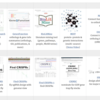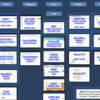Off-target analysis
. 2020. “FlyRNAi.org-the database of the Drosophila RNAi screening center and transgenic RNAi project: 2021 update.” Nucleic Acids Res.Abstract
. 2019. “Pooled CRISPR Screens in Drosophila Cells.” Curr Protoc Mol Biol, 129, 1, Pp. e111.Abstract
Navigating our online tools -- orthologs, literature mining, qPCR primers, and so much more!
2018
Apr
13
. 12/9/2017. “Zinc Detoxification: A Functional Genomics and Transcriptomics Analysis in Drosophila melanogaster Cultured Cells.” G3 (Bethesda).Abstract
. 2016. “Genome-Wide RNAi Screening to Dissect the TGF-β Signal Transduction Pathway.” Methods in Molecular Biology. Publisher's VersionAbstract
Now Available: Our 2017 NAR database issue update
. 10/31/2016. “Loss-of-function genetic tools for animal models: cross-species and cross-platform differences.” Nat Rev Genet. Publisher's VersionAbstract
. 2007. “Design and implementation of high-throughput RNAi screens in cultured Drosophila cells.” Nat Protoc, 2, 9, Pp. 2245-64.Abstract
. 2014. “RNAi screening comes of age: improved techniques and complementary approaches.” Nat Rev Mol Cell Biol, 15, 9, Pp. 591-600.Abstract
. 2010. “In vivo RNAi: today and tomorrow.” Cold Spring Harb Perspect Biol, 2, 8, Pp. a003640.Abstract
. 2012. “RNAi screening: new approaches, understandings, and organisms.” Wiley Interdiscip Rev RNA, 3, 2, Pp. 145-58.Abstract
. 2006. “FlyRNAi: the Drosophila RNAi screening center database.” Nucleic Acids Res, 34, Database issue, Pp. D489-94.Abstract



